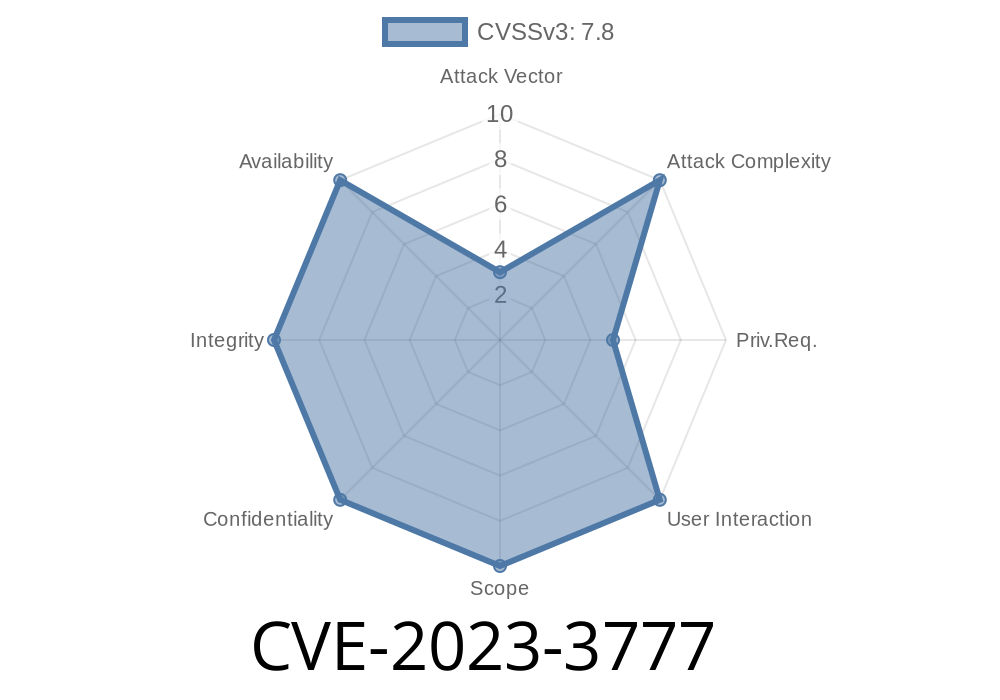CVE-2023-3777 is a use-after-free (UAF) vulnerability in the Linux kernel's Netfilter nf_tables subsystem. It allows a local attacker to escalate privileges to root by exploiting improper table rule deletion process in the firewall component. This post explains how the bug works, provides a clear PoC (proof-of-concept), gives links to key references, and shares mitigation advice.
What is nf_tables?
nf_tables is a framework in the Linux kernel that provides filtering, NAT, and other network packet operations. It's essentially the backend for firewalls like iptables and nftables.
The Root Cause
When you remove (flush) all rules in a table using nf_tables_delrule(), it doesn't properly check if a chain is "bound." In simple terms, deleting rules can free objects that may still be in use elsewhere—a classic "use-after-free" scenario.
Rules may free objects.
- If not properly guarded, removing/flushing can double-free or use objects after they’re freed.
Commit that Fixes It
> Fixed in: 6eaf41e87a223ae6f8e7a28d6e78384ad7e407f8
> Patch: Commit link
Exploitation
A local attacker with the ability to add/firewall rules (either as an unprivileged namespace user or with CAP_NET_ADMIN) can trigger a use-after-free. By freeing kernel objects and then force-allocating something else in its place, they can potentially hijack the kernel execution path—turning it into code execution or privilege escalation.
Key References
- CVE Page (NVD)
- Linux Kernel git history
- RedHat Advisory
- nf_tables Documentation
Here’s what this might look like (for educational purposes only!)
#include <stdio.h>
#include <unistd.h>
#include <sys/socket.h>
#include <linux/netlink.h>
#include <string.h>
int main() {
// 1. Create netlink socket
int sock = socket(AF_NETLINK, SOCK_RAW, NETLINK_NETFILTER);
// 2. Build and send netlink messages to create table, chain, and rule
// (use libmnl or manually build netlink messages)
// 3. Flush rules with crafted netlink message
// 4. Immediately spray kernel with controlled data (e.g., using sendmsg() or other kernel heap spray techniques)
// 5. Attempt to trigger code execution or escalate privileges
// Pseudocode only! Real exploit would need to handle many details.
close(sock);
return ;
}
Note: See good examples of nftables UAF PoCs, but beware that running public exploits is dangerous and likely illegal if unauthorized.
You can trigger the vulnerable code path using nft (as root or in a privileged namespace)
# Create table and chain
nft add table inet mytable
nft add chain inet mytable mychain { type filter hook input priority \; }
# Add rule
nft add rule inet mytable mychain ip saddr 1.2.3.4 counter
# Flush table (this triggers the bug in vulnerable kernels)
nft flush table inet mytable
Impact
On vulnerable kernels, a user allowed to configure firewall rules (sometimes available to containers and unprivileged namespaces) can run arbitrary code in kernel context. This generally means local root (highest privilege)!
Complexity: Medium, but public exploits (including Metasploit modules) may appear.
- Workaround: Remove rule-adding privileges from low-trust users, or disable nf_tables modules if possible.
Mitigation
- Upgrade your kernel to a version past commit 6eaf41e87a22 (look for version numbers after July 2023).
Final Thoughts
CVE-2023-3777 is a critical example of how subtle race conditions and bad reference counting in network firewall code can lead to serious privilege leaks. If you let users configure nf_tables rules—especially in containers—you could be vulnerable.
Recommended Action: Patch now!
*References*
- NVD CVE-2023-3777
- Linux Kernel Patch commit
- RedHat advisory
Timeline
Published on: 09/06/2023 14:15:10 UTC
Last modified on: 11/29/2023 15:15:08 UTC
